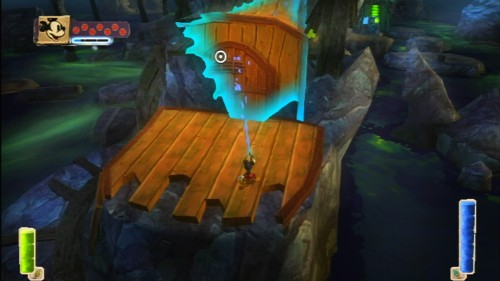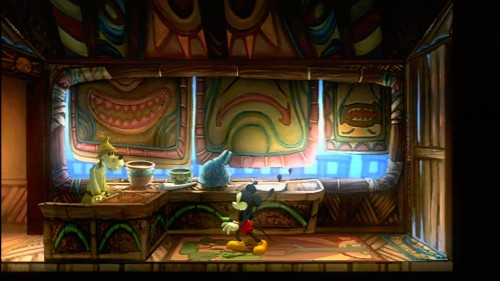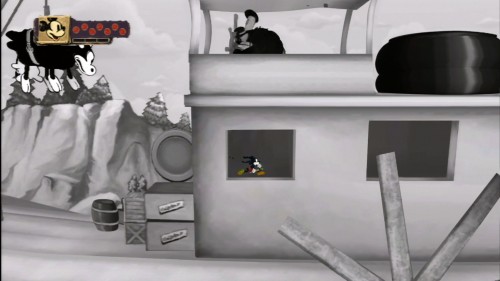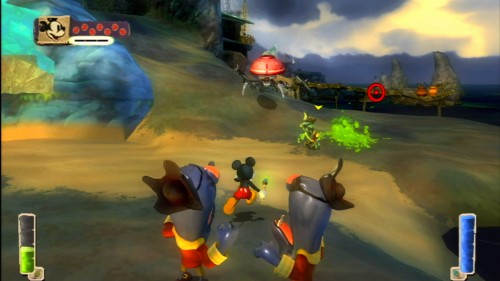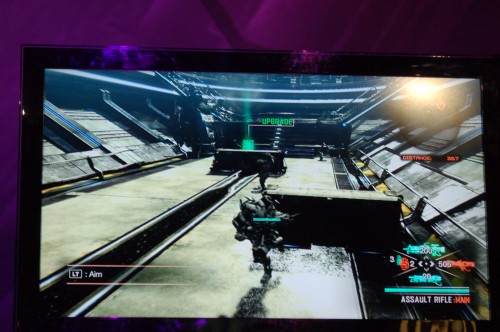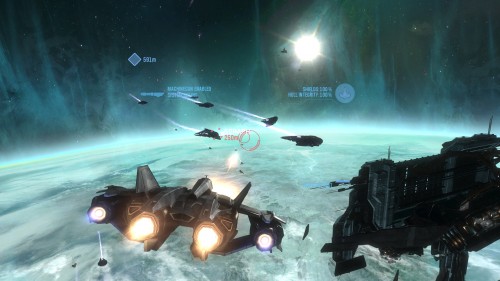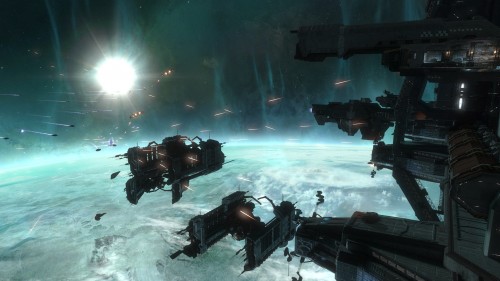If there’s one thing I learned from my extended visit to the Disney Interactive Studios booth at E3 2010, it’s that Warren Spector’s (Deus Ex, System Shock, Ultima Underworld) has gotten the people at his new studio, Junction Point, to drink his game design Kool-Aid.
Multiple times throughout my demonstration of Epic Mickey, the point of player choice and consequences was hammered home at almost every section of the game. And why wouldn’t it be? It’s Spector’s signature game design element. Give the player the freedom to choose how to solve in game problems and give these choices weight through tangible consequences in the game world. It was a huge part of what made Deus Ex so beloved and it’s clearly an integral element in his first title for Disney, Epic Mickey.
Epic Mickey is an ambitious action-adventure-platformer title being developed exclusively for the Wii. The gameplay can be broadly described as The Legend of Zelda: Ocarina of Time meets Super Mario World with the water spray backpack from Mario Sunshine. Mickey will have access to paint and paint thinner, which allows him to manipulate the game world by erasing or creating objects and environments. None of these mechanics can be trumpeted as truly original, but their blended execution is what makes this game stand out.
Visuals:
I was told that the overarching aesthetic theme of the game is “lost and forgotten” Disney characters and places, including Walt Disney’s first creation, Oswald The Lucky Rabbit. Disney buffs should also be ecstatic to see the attention to historical detail that Junction Point has poured into this game. I’ll admit to being a bit of a “casual” Disney fan, so I could only smile and nod as the Junction Point rep repeatedly pointed out structures (such as the Swiss Family Robinson’s Treehouse) and landmarks in the game that were once actual buildings and rides decommissioned from the real Disneyland itself. “Tickets” are also used as a form of currency in the game as a nod to the days in which you actually needed tickets to go on the rides at Disneyland.
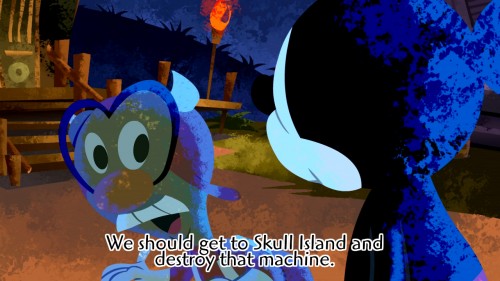
Even the cutscenes are animated like an old Disney cartoon from the 50’s. You definitely get the feeling that you’re playing through a labor of love with this game. The attention to detail and presentation is just jaw dropping. What impressed me even more was the excitement and passion with which the Junction Point rep used to describe the game for me. Out of all the games I played at E3, Epic Mickey was the one I spent the most time on simply because the developer had so much to say and show from it.
Gameplay:
The E3 demo was broken up into three distinct areas: Ventureland, Skull Island, and Steamboat Willy. Each of these “maps” seamlessly transitioned with one another despite having vastly differing gameplay elements.
Ventureland was a lot like visiting a town in Zelda. The focus on this “quest map” was on NPC interaction and problem solving. Here, the choice and consequence mechanic was clearly on display. One of my first tasks was to help Smee the Pirate win over a ladyfriend in exchange for a quest item. He’s unsure as to what kind of gift to get her. By doing a little investigating around town, I figured out that she loves roses, so I told him to get her some roses and boom, Cupid played, quest item received. Had I been lazy and just told him to get something else, she would have been less than impressed and taken it out on poor Smee who in turn would have charged me money for the quest item, rather than handing it over in gratitude.
Another situation involved Tiki Sam, a shop keeper, who tasked me with collecting three masks in exchange for another one of the quest items. Now, here’s where attention to detail can pay off as a player. If you pay attention to the screen as you’re talking to him, you’ll notice that there’s a few masks on the floor behind him in the shop. When you exit the shop, you can actually see a little opening behind some bushes that will lead you to the back door of the shop. Once inside, you can nab a mask without him noticing. If you try to take all the masks, though, he’ll catch you and impose a stiff penalty on obtaining the quest item you need.
I find stuff like this fascinating because they blur the line between “good” and “bad” in a game. Too often, games will purport to offer players a choice, but really only have one style of play be “right.” Epic Mickey looks to add a little grey area in how you approach things. The situation with Tiki Sam is one in which stealing his mask actually ends up saving you time and money compared to the “morally right” choice. The Junction Point rep explained the reasoning for offering an “evil” choice as getting back to Mickey’s roots as a “mischief maker.” Sure, I’ll bite on that. It’s certainly no bigger stretch than games that force a character to act on the straight and narrow all the time.
The Steamboat Willy stages act as a sort of transition in between game maps. These are “Super Mario”-esque platform stages with a very slick black and white “Steamboat Willy” presentation. In the demo, Mickey passes through one of these to get from Ventureland to Skull Island. At first glance they definitely give a *wow* impression, but once you got past the very cool visuals the gameplay is pretty standard 2D platform fare. Mickey can jump on enemies’ heads and even double jump to reach platforms and collect items. The actual level structure itself was fairly pedestrian. It might be interesting to see more inspired “platform map” designed in the full game, but I won’t be heartbroken if there aren’t simply because the visuals are so cool.
Finally, Skull Island showed off the “action map” portion of the game. It plays similarly to the overworld in a 3d Zelda game except Mickey is armed with his paint and thinner rather than a sword and shield. In fact, Mickey’s even followed by a little Navi Faerie-like companion named Gremlin Gus. He offers you little hints and comments as you come across places of note. I found it really interesting that he acts as a sort of conscience too. Use your paint thinner to eliminate a lot of enemies and he’ll say something like “Hmm, you’ve been using your paint thinner a bit liberally, is it really necessary?” I can see it getting annoying for some people, but personally it made me question my actions a little bit. Was there a better way of handling these creatures? Am I really murdering the lifeblood of the game world?
When all is said and done, any game starring Mickey freaking Mouse that gets me to question the morality of my actions is doing something right in my book.
For live gameplay videos with Warren Spector narrating, check out the 2 videos below:
Screenshot Gallery:
[cincopa 10648951]

